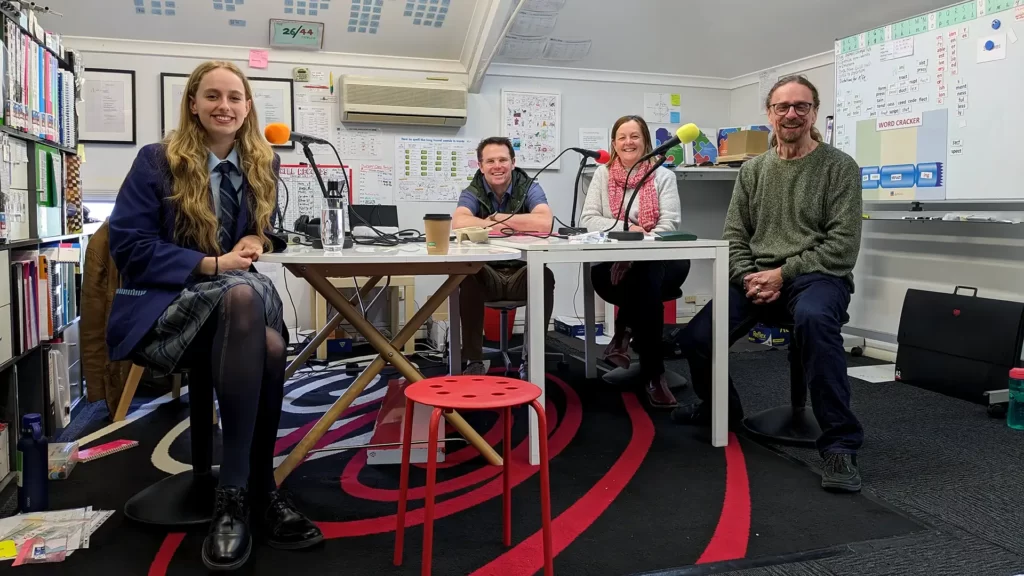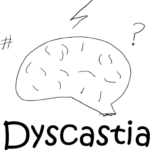Watch episode 15 on YouTube
Sue Griffith

Sue is a registered teacher with many years of experience in primary teaching. She has specialist Maths training in programs designed to support students experiencing difficulties or delays in Maths skills, including students with dyscalculia and/or dyslexia.
- QuickSmart Numeracy Intervention
- Ron Yoshimoto Multisensory Maths program – based on the Orton-Gillingham principles
- Singapore Maths
Sue designs individual courses that are explicit, structured, multisensory and manipulative-based for students who are underachieving in Maths. Programs utilised are all evidence-based interventions. Students learn to think mathematically and develop understanding beyond rote memorisation. Programs focus on fostering a positive attitude towards Maths and the foundational skills, including but not limited to:
- Place value and the decimal system
- Basic Mathematical operations of addition, subtraction, multiplication and division
- Basic number fact knowledge and multiplication tables
- Fractions, decimals, percentages and ratios
- Problem solving strategies
- Application of Number knowledge to concepts of Time, Money and Measurement
Sue also offers young people support in Literacy.
- She has specialist training in ‘Teaching Students with Dyslexia’ and follows the Multi-Sensory Playberry Dyslexia Program which is based on the Orton-Gillingham approach.
- Sue also has a Graduate Diploma in Education, specialising in Literacy and Language.
- Sue designs literacy support programs such as ‘The Writing Process’ to suit individual student needs.
Sue believes all children can succeed in improving their reading, writing and mathematical skills. Please contact her to discuss how she can best support your child in their learning.
Lilly Shanahan

Lilly Shanahan is a dedicated Year 12 student at Sacred Heart College in Adelaide, South Australia. As someone who lives with dyslexia and dyscalculia, Lilly has navigated a variety of educational settings and individual learning plans (ILPs) throughout her academic journey.
Her varied experiences in different school environments have given her a unique understanding of the challenges and opportunities presented by learning with specific learning disabilities (SLDs). Lilly’s personal insights into effective ILP strategies are invaluable.
As a guest interviewee in this episode, Lilly shares her firsthand experiences and offers practical advice for kids, parents, and teachers. Her contributions provide a relatable and insightful perspective on how to navigate and optimize ILPs, making her story a source of inspiration and guidance for those facing similar educational challenges.
Show notes
During the episode, we mention a few things that may not be familiar to every listener. We always try to be as accurate as possible about what we say in all Dyscastia Podcasts. However, things do change, and if we have accidentally omitted information or something we have said is no longer the case, particularly in regards to policies in the individualised education plan space.
Here are some links that might help.
Special Provisions in Exams:
Students can apply in all states of Australia for special provisions in tests and exams. Different authorities generally for a documented history of special provisions for timed assessments. IEPs that document special assessment provisions will be an important part of this evidence.
South Australian Certificate of Education (SACE)
Currently, South Australia looks to have the best information page of all the states and territories. This section of the SACE Board website provides information on how students can apply for the types of special provisions discussed during this episode.
A quick look took me to these pages for other States and Territories:
Victoria: Special provisions Fact Sheet
New South Wales: Disability provisions for exams
Queensland: Access arrangements and reasonable adjustments (AARA) — formerly known as special provisions
Australian Capital Territory: Equitable Assessment and Special Consideration
Northern Territory (it seems the NT have adopted SA’s approach) : Special provisions in the SACE
Western Australia: Special Provisions
Tasmania: Reasonable Adjustments for TASC External Assessments
USA We live in Australia, so we are not familiar with US processes but these links seem like a good place to start:
- The 13 disability categories under IDEA
- Understanding IEPs
- The Individuals with Disabilities Education Act (IDEA)
Special Provisions Mentioned – What to consider when deciding what to offer a student.
Below are some of the topics discussed in the episode. A key takeaway is that any provision or accommodation that might make its way into a student’s plan will have upsides and downsides that need to be balanced. A glaring omission from our conversation was assistive technology. Unfortunately, the conversation just didn’t take us there. Assistive tech is an incredibly important part of the picture for students with difficulties and the possible topic of a future episode.
As you read these, you may notice that these are options that can be made available to all students. Many ideas discussed in this episode make a difference for all students and get teachers thinking about what exactly is being assessed.
Asking what’s helped in the past
This is often missed in the mess of creating an individualised plan for students. Even though a student may have never had a formalised plan, they may have had teachers make day-to-day accommodations that have helped. Secondary students are more likely to know what helps them! Primary students may not; however, when schools ask students, “What have teachers done that has helped you learn?”, students do feel more supported.
It is important also to understand that there will be times when adults have noticed that one approach has made a big difference, but the student has not. Students will probably be aware of approaches that have helped them to worry less about schoolwork, but adults may be more aware of what has improved the quality of student work. I guess what we’re saying is students won’t always be right about what has made a difference, and nor will adults. The conversation is what makes the difference.
Be prepared to try different approaches
Something that makes a big difference for one student may not be so effective for another. This is a result of how students are differently affected by learning difficulties. As well as this, some approaches will be more effective for different types of work. There’s no shortcut to finding out what makes a difference for a student. We just have to try different things and make sure we are candid with students about how they’ll need to give approaches a decent try before writing it off. Instant success, although wonderful, is rare.
Additional time to complete assignments
Being given additional time can be a lifesaver; however, Lilly and Michael made the important point that sometimes additional time can be a curse. If a student has received additional time for an assignment from all teachers, it can just create a due-date bottleneck. Part of having a SLD (and ADHD) can be difficulty managing time and task and we all, in spite of our differences, need to learn approaches that help us meet deadlines. Some students will need explicit coaching on lining up due dates with available time. Typically, parents pick up this task, but it can be exhausting. Anything schools can do to help students pace themselves toward due dates is appreciated by families.
Some of the best tips on this comes from a book called Teaching Tough Kids by Mark LeMessurier. It’s a highly recommended resource.
Reduced word count
This is perhaps the best-known addition to individualised plans for students who have difficulties with the volume and quality of written output. Reducing the volume of written work can make a big difference. Here’s the difficulty – reduced word count can create its own set of challenges as it requires students to condense what they know into fewer words! It’s important to remember that SLDs like Dyslexia or Dysgraphia make it harder to get what you know onto paper in a coherent way. They don’t limit a student’s depth of understanding about a topic. As well as this, regardless of the word count, students will still have to go through the scut work of sequencing their ideas and deciding on what order to lay them out.
Exemplars of student work
A long-standing piece of good practice for all students is showing them past work from other students that shows what exemplary work looks like. Different students use these differently; however, students with SLDs often pay particular attention to the sequencing (layout of paragraphs) and also some of the language choices used in exemplars. Plagiarism must always be taken into consideration; however, borrowing a particular arrangement of language is really how we all learn to write more effectively. If you are not sure where to start with providing samples, this might help the Australian Curriculum work samples resource.
Alternative ways students can show learning
We discussed a range of other ways students’ knowledge of a topic can be assessed other than through lengthy written assignments. When deciding on accommodations like this, we need to think very hard about what we are assessing. One student famously said about a History teacher, “
“What doesn’t this teacher get? If he keeps insisting that I write heaps, all he’s testing is my learning disability, and I’ll just keep proving that I’ve got a really big one.”
If we are assessing how well students can follow the conventions of a particular written form, then absolutely, students need to write to show evidence in writing. If we are assessing students’ understanding of the factors that led to WW1 then for students with SLDs, the writing will become a barrier to them showing what they know and understand.
It pays to think carefully about what alternatives to offer students and whether these will suit what you are assessing. Here is a list of some alternatives to long-form written tasks:
- Heavily scaffolded writing frames (usually a feature of good teaching anyway)
- A PowerPoint presentation with embedded audio where the student goes into greater depth than the on-slide print
- Some information in paragraph form
- Some in dot-pointed form
- Captioned Illustrations (cartoon style) where appropriate
- Dual-coded infographic
- A well-captioned timeline to show a series of events
- Recorded oral presentation – video themselves explaining/teaching the concept to a family member or a fictional class
- A recorded session where they teach someone else the content
- Live oral presentation
- PowerPoint with embedded audio
- A combo of the above modes
It is important to note that regardless of which alternative is chosen, a student will always have to know the content and put that knowledge into a sequence that makes sense. We are not modifying in regards to what a student knows; we are modifying the ways in which that can demonstrate that knowledge. If students don’t know the topic, there’s just nowhere to hide!
A note on good old sticky notes: some students benefit from being taught how to write one concept or idea on a sticky note and do this for all the ideas they wish to include in their assignment. They then place these on a surface and arrange and rearrange until they have a sequence they are happy with. Then, they can think about how they will connect these ideas to form a complete piece of work.
Recorded oral assignments
A game changer for many students is the chance to record themselves talking about a topic or teaching someone else (and even answering questions from the person they’re teaching) can be a much better way for them to show what they know. The sky is the limit here. Again, students still need to know the content, cover what’s expected in the assessment rubric and have a coherent sequence of ideas.
Interview with the teacher (In place of or supplementary to written assessment)
Bill once worked with a great dyslexic student called Charlie. Charlie was doing year 12 and was probably one of the best students of History Bill had worked with. In the lead-up to an exam, Bill and Charlie revised key dates and factors that led to the event that would be assessed in an essay question in the exam. Charlie knew the content forward and backwards. His analysis was sharp, and his knowledge was deep.
Two weeks later, Bill has a crestfallen Charlie in his office. His exam result was disappointing. Charlie had lost a significant number of marks due to not being able to pull it all together in essay form under the pressure of time. Dyslexia had robbed Charlie of time, and the additional 10 minutes he had been provided just hadn’t been enough to make up for the processing time that dyslexia took from him. It was too late to change the mark, but Bill lamented that if that teacher had pulled Charlie aside for 10 minutes after the examination (unannounced, so Charlie wouldn’t have any preparation time) and asked him to expand on some aspects of the essay, Charlie’s grade would have gone from a C to an A.
This could have been an option in Charlie’s IEP. Of course, in high-stakes assessments, an accommodation like this may need to be approved by a higher power. However, the option of a student interview, where a teacher asks students a set of prepared questions or asks students to elaborate on points that may not have been expressed as they’d have wished to under timed conditions, can make a huge difference.
Timed homework
With an understanding of how much angst and heartache homework tasks can cause for students with learning difficulties, many teachers have set time requirements (and ceilings) for homework rather than setting tasks that need to be completed.
As Lilly and Michael discussed, although this can reduce meltdowns, teachers do need to consider that a student without learning difficulties will get much more done in a set time than a student with an LD. It can also be very difficult to walk away from a homework task after a set time just when the penny has dropped and a student has finally started making headway.
Example Individual Learning Plan
This is designed as an example of what might be included in a plan. It isn’t intended to be used as is, and it is not recommended that this many adjustments be used in a single plan – it should be kept simple and achievable. Download the sample ILP.
Comments and questions are welcome!
We would love to hear about your experiences with Individualised Education Plans. Please feel free to leave a comment or question below.







2 Responses
Great podcast. It was really great to hear things from a students perspecitive as it is often had for our kids to articulate what they are think and how they feel. Lilly did this so well.
My son, currently in yr 9 in Sydney has dysgraphia. The school are supportive and he has been on a ILP since diagonsed in year 3.
I really feel for the teachers in secondary school they teach up to 5/6 lesson a day, with a new set of 20-30 kids each lesson. That’s a lot of potential ILP to be actively aware of. We are constantly trying to help our son advocate for himself and role play ways of doing this as he finds it really frustrating that at the start of each year the teachers often don’t contect the child with their ILP for the first few weeks. This causes him great anxiety.
A couple of things we found helpful, that our school is now implementing are:
1. Adding a photo of the kids on the front page of the ILP to help teachers identify the student quickly.
2. We create a 1 page summary (including a photo of our son) titled’ My Learning and Support Plan’ at the start of each year that he can hand to each teacher in week 1. It’s a summary of his approved accomodations, we run it by the head of Learning Support before handing out.
It gives him something concrete to hand to the teacher at the end of a lesson to start a conversation. He likes their verbal acknowledgement that they are aware he has an ILP and they are aware he can use his laptop for written work. I saw this 1 page summary on a forum based in the USA and it has been a game changer for him. We involve him in want he wants to include under the following headings:
My top 5 classroom adjustments
My Curriculum adjustments
My Assessment adjustments
My Environmental adjustments
My Goals this semster
It also has My Strengths, My Challenges, I Love…
Parent contact details, student mentor
Thank you so much Joanna, and sorry for my late reply, the site has been inundated with hundreds of spam comments that I am sifting through! These are excellent suggestions and I agree. We have done something similar with the one page summary and I forgot to mention it! The photo is a great addition.